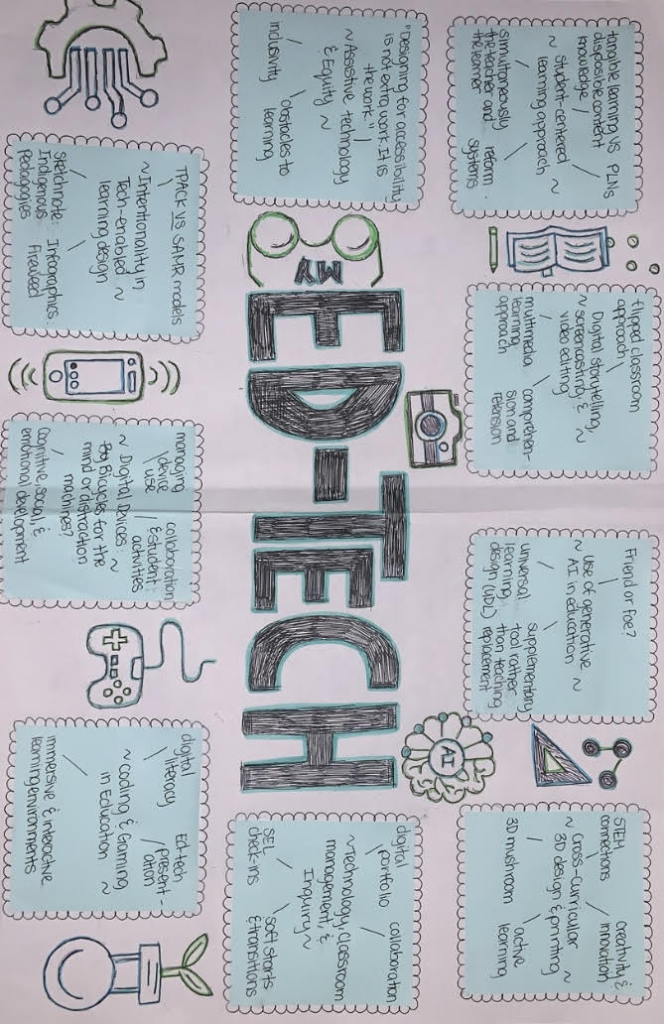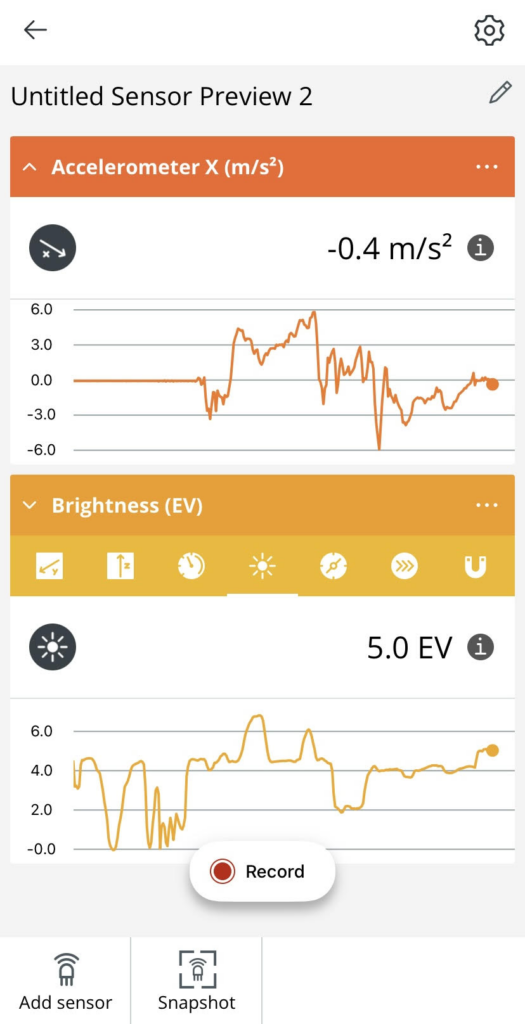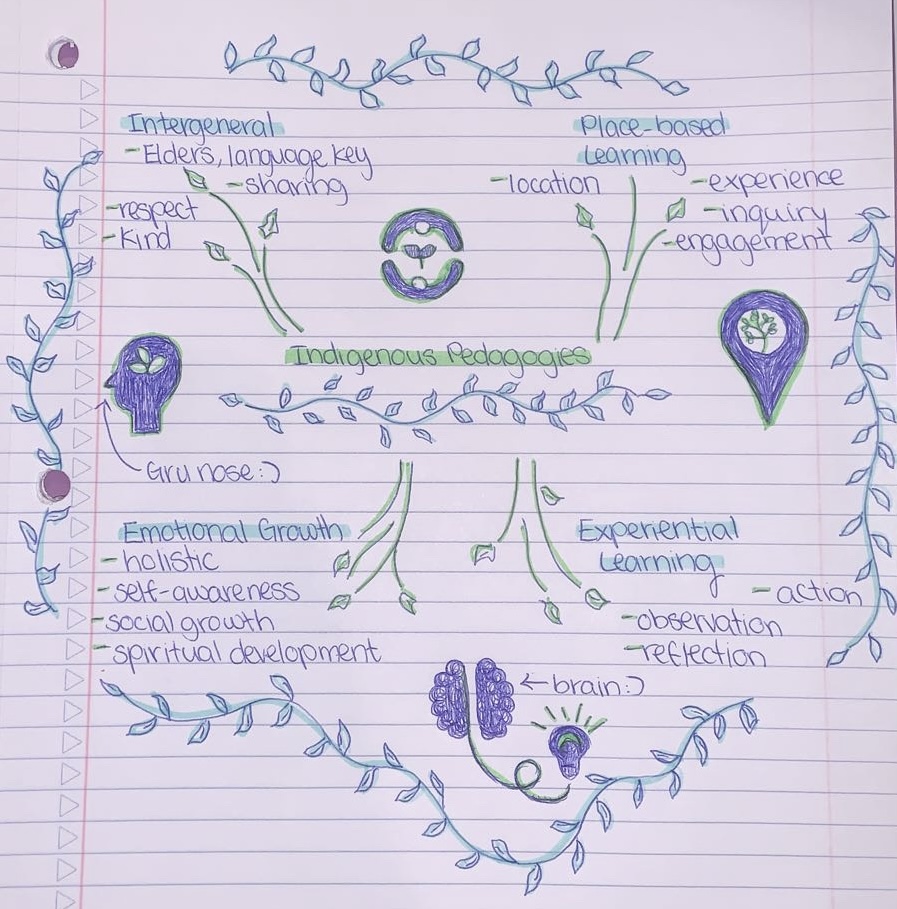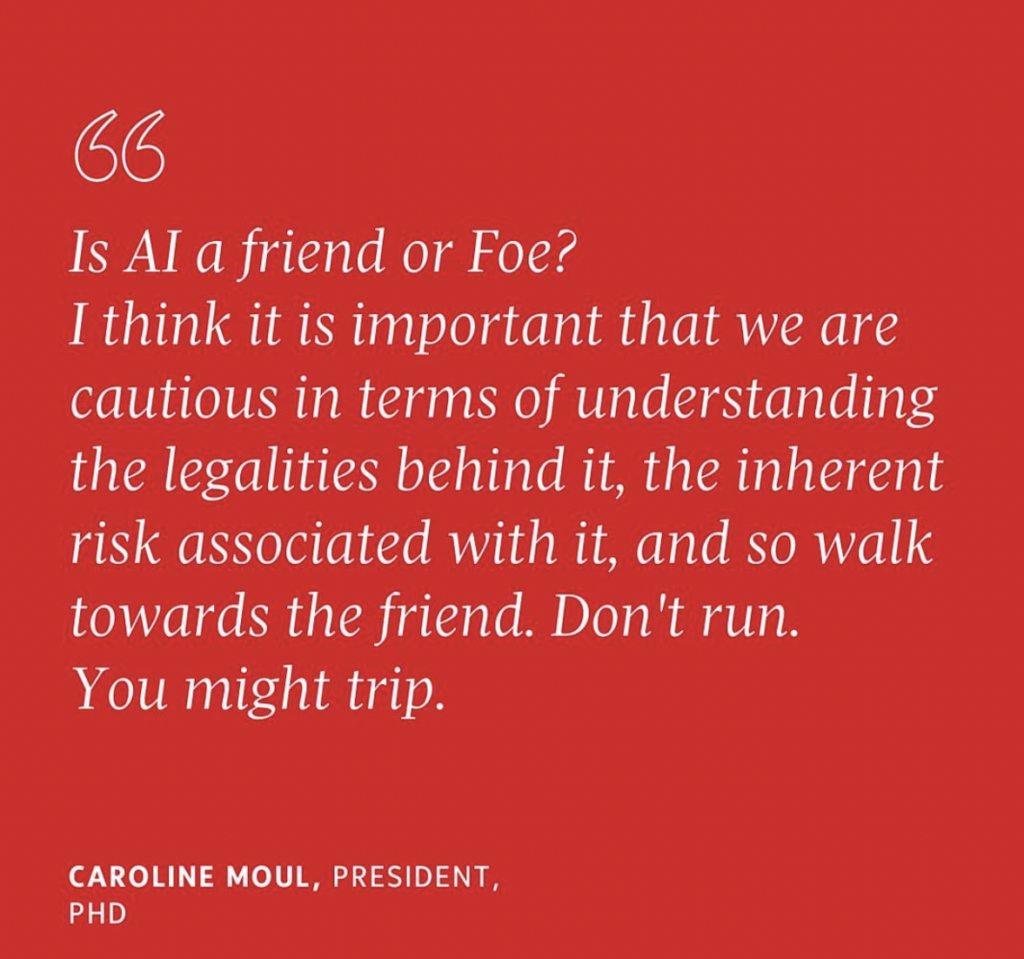
Topic #13: Sketchnote Course Reflection

This is my weekly reflection category for this course.

I think that at an elementary level, cell phones are distractions. My thoughts pretty well align with School District 61 Code of Conduct Update: Cell Phones & Personal Digital Devices. Elementary school is a crucial period for kids’ cognitive, social, and emotional development. Schools aim to provide an environment where students can focus on hands-on learning, physical activity, and direct engagement with peers, which I think would be hindered by phone use. Elementary students are still developing the emotional maturity required to handle the responsibilities that come with having a phone (privacy concerns, online safety, managing screen time etc.), and I think that adding the expectation of using it responsibly in class is too much at this stage of their development.
I don’t think that phones have a place in grade four and five classrooms (which is the grade that I’m learning towards teaching). Most of the kids I see on Wednesdays don’t have phones, and watching them try to use Chromebooks was a bit of a struggle. For that reason, I don’t think that my group would be able to use the Arduino Science Journal. I think it has some super cool activities, but I think that they are better suited to a middle & high school crowd. In older age groups, I think that students will be better equipped to make responsible decisions about their use of technology.
I recognize that I’ve taken a pretty hard stance on no phones in class, but I do understand how they can be useful for certain students and in certain situations. I absolutely believe that accommodations such as access to a computer or Chromebook should be made for students without personal digital devices who may need access to the internet to complete schoolwork. I also believe that if the use of personal digital devices can support students with disabilities, diverse abilities, or medical needs as outlined in the student’s support plan or IEP, that those devices should be supported and encouraged.
Here is a screenshot of my Arduino Science Journal activity. I was using the light detector to investigate the light in my environment! I found my highest reading when I tilted the phone towards the natural light in my room, and its lowest reading when I hovered my finger over the light sensor (I found it on the front face of my phone!). Super cool activity!



This week’s class was fantastic — Brittany is such an inspiring teacher! I really appreciate her SEL morning check-ins and her focus on soft starts and transitions. I spend Wednesdays in a grade 4/5 class, and they begin each day with about fifteen minutes of silent desk work, and finish their day by free time or outdoor play. I’m a strong believer in soft starts and I can absolutely see how they can help make time for absences and assessments. Brittany’s idea of having each student touch a “zone” as they enter the classroom is also brilliant — I might borrow it! It’s a simple yet effective way to help kids feel safe and supported.
I was also excited to learn about the digital portfolio tool she uses, which I’d never heard of before. It seems like a great way to track progress and communicate with families. I really like the idea of ongoing assessment rather than relying on traditional report cards at the end of a term. The way Brittany collaborates with her students to create rubrics, decorations, and learning materials also fosters a strong sense of community in the classroom. I definitely see the value in these approaches and hope to incorporate them into my own teaching someday.
This website has 10 student check-in activities that could be used as part of a morning soft start! Link: https://www.socialemotionalworkshop.com/student-check-in-activities/
I absolutely believe that gaming can be used as an educational tool! Using games, I think that we can “trick” students into fostering skills like computational thinking, problem-solving, critical thinking, and decision-making. By integrating digital games into the curriculum, we can create immersive and interactive learning environments for our students!
Whether it’s reinforcing vocabulary, practicing math concepts, or exploring historical events, I think that games can directly support the achievement of specific learning objectives of core subject areas. In addition to subject-specific learning, gaming can also support the development of digital literacy—a critical skill for success in today’s increasingly technological world. Digital literacy involves the ability to use technology to access, manage, evaluate, and to create information. It is a skill that, like all other core subjects, requires practice and development — which games can facilitate in an engaging way!
Right now I’m leaning towards teaching a 4/5 grade level, and I’m not sure if coding would work at that age group. I spend one day every week in a grade 4/5 class, and one thing I’ve noticed is that the students have incredibly varying levels of math and literacy skills. There are students in that class who are working on multiplication and division, while some are still learning how to convert numbers from expanded form to standard form. However, maybe I could pick an activity where students work at their own pace and can pick their own challenge levels. Game-based learning has so many benefits, including interactivity, immediate feedback, customization, and enhanced accessibility, to name just a few. I’m eager to find ways to integrate gaming into my classrooms, hopefully* across all age groups.
This is a screenshot of the coding project that I worked on for this class! It was called Music Lab: Jam Session and it was super fun. I was really grateful for their clear instructions — everything was outlined perfectly and was easy to follow. The activity was self-guided, and was advertised for grades three and up. In the Music Lab, students remix tracks from artists like Sabrina Carpenter, Lady Gaga, and Shakira while mastering coding basics such as sequencing, functions, and exploring AI-driven beat creation. It was a super creative activity that I would love to do with my students!
After this week’s class, I’m feeling a bit lost and am finding it hard to understand the differences and similarities between the SAMR & TPACK technology models. So for this reflection blog post, I’ve decided to do a bit more research and try to find out what’s going on! The website HeyHi (https://blog.heyhi.sg/comparison-of-tpack-vs-samr-model-which-one-is-better/) has clarified things quite a bit for me. Their examples of TPACK & SAMR in practice were especially helpful! I’ve included a list of their examples that I pulled out and that I think provide some good ideas.
“TPACK in practice will demonstrate the seamless integration of technological, pedagogical, and content knowledge. Here are some examples of TPACK in practice:
“SAMR in practice will analyze the extent of technology integration in the classroom. Here are some examples of SAMR in practice:
Image credits: SAMR model, illustrated by Sylvia Duckworth & TPACK Model by Punya Mishra & Matthew J. Koehler
In addition to these examples, I could use platforms (though I’m not sure which ones yet) to gather student feedback and assess student understanding. TPACK could then help me adjust my tech choices/lesson based on student needs and responses. In addition to HeyHi’s examples of TPACK and SAMR in practice, I also found a lot of value in the Challenges & Advantages [of TPACK & SAMR] Application section of the website.
Advantages of TPACK and SAMR Applications:
Challenges of TPACK and SAMR Applications:
Anyways, I think my extra little research has really helped me this week 🙂 Another topic that we touched on was sketch-noting! I don’t have too much practice with sketch-noting for education purposes… although I like to draw and have been known to doodle while in lecture. It was super interesting and I’m glad that we spent some time exploring it! I’m excited to use sketch-noting with my future students as a note taking/comprehension activity. I think that using shapes, text, and images to virtually summarize and connect ideas is fabulous brain-based learning practice. Sketch-noting can also serve as an effective tool for oral language and reading comprehension. After listening to a Ted Talk or reading a chapter of a book, I could ask students to summarize their understanding through sketch-notes. They could draw key concepts and themes, highlight important terms, and create visual connections. Sketch-noting could also be done collaboratively; students could create a sketch-note on a poster paper or digital platform (which could encourage teamwork and discussion). By incorporating sketch-noting into my lesson plans, I hope to make learning more interactive and help my students develop skills in visual thinking, summarization, and creativity.
I’ve included the sketch-note that I worked on during this week’s class!

I think that assistive technologies are essential for creating equitable and inclusive classroom spaces! These technologies can help dismantle obstacles to learning and can help students engage with content in ways that suit their individual strengths. I really appreciated Nicole Crozier’s quote: “Designing for accessibility is not extra work. It is the work.” This quote really pushed me to reflect on where I might be falling short in creating accessible media. This is essentially my first time creating self-guided media, and I realize that many aspects of accessibility have escaped my notice. This class has been a great opportunity for me to learn how I can do better moving forward.
One area of digital accessibility where I’ve fallen short is the visual aspect. I often forget that not everyone perceives color in the same way, and I’ve noticed that my website has many muted, pastel colors that might be hard for some people to see. I also forget to take image contrast into account and recognize that I haven’t been utilizing alt text for my photos!
Two small mushrooms with brown and tan caps grow in vibrant green moss covered in dew. I took this photo during a hike in Strathcona Park, B.C., on Sunday.
Videos are another area where I have failed to make my content accessible. In Topic 3, I experimented with screen capturing and editing to make an interactive video. Looking back, I realize that I didn’t include closed captions, which isn’t accessible for those who are hearing impaired. I wanted to learn how to add captions, so I took a snippet from my first H5P video and tried out YouTube’s automated captioning tool. You can find the first 30 seconds of my revised video here: https://youtu.be/i_SmMivGv8w. While I found YouTube’s automated captions to be mostly accurate, I still needed to correct grammar, punctuation, and spelling errors. I think it’s important to note that in my video, I talk about the Coast Salish Indigenous dialect SENĆOŦEN, and the AI absolutely butchered its spelling! This serves as a reminder to go through and fix any mistakes like this as I’m sure that they could be hurtful, especially if presented publicly.
I’m trying really hard to improve and moving forward, I will be more mindful to create accessible media.
I really struggled with the 3D printing workshop! I am notoriously terrible with technology, so I was grateful to be sitting next to someone who knew what they were doing. This experience reminded me of what it feels like to work hard and still feel completely lost, which I think is a really valuable lesson! It’s an important skill for a teacher to be able to empathize with a student who feels confused and discouraged about something. That’s why, when I become a teacher, I am going to try to make space for every student to have an opportunity to showcase something they’re good at. I think that it boosts their confidence, fosters a positive perception among their peers, and reinforces the idea that they’re capable and intelligent. A 3D printing workshop could be an excellent opportunity for this! If I have a student who finds English challenging but excels in math, 3D printing would be a great way to boost that kid’s confidence. It would also be a great way for that kid to engage with and help other students who may not have developed those skills yet.
There are many more potential benefits of using 3D printing in classrooms. Above all, it provides an opportunity for active learning; it is a hands-on experience that offers tangible results. 3D printing empowers kids to think creatively and innovatively, and to problem-solve independently. It also allows for cross-curricular learning, enabling kids to create while subtly engaging with subjects like science, technology, engineering, and math. I found a website that has a list of 3D printing projects that compliment STEM subjects – I encourage you to check it out! (https://www.inksmith.ca/blogs/news/3d-prints-for-stem-projects).
Although there are many advantages to using 3D design and printing in schools, there are also challenges to consider. These include the high cost of equipment and materials, the environmental impact and plastic waste, and the steep learning curve for both educators and students. Learning to understand and troubleshooting the software, as well as designing 3D models, requires a significant investment of time.
Personally, I am not sure if I want to incorporate 3D printing as a tool in my classroom. I lack confidence in using the technology and am concerned about its environmental impact. I’m also leaning toward teaching intermediate grade levels, and I worry it might be too complex for my learners — I’m almost twenty and I still struggled with it! That being said, I will keep an open mind and continue to learn more about it.
This is a screenshot of the 3D mushroom that I (with the help of a classmate) created during the workshop.

I feel somewhat conflicted about my stance on generative AI in classrooms, and trying to navigate its complexities always leaves me feeling a bit scattered! I do have some skepticism about AI’s implications in education settings. Two major limitations of GenAI that I find quite off putting are its absence of originality, and its non-ethical & moral decision-making. I am also keenly aware of issues like data privacy, intellectual property rights, and environmental implications.
However, I do think that there are promising use cases for GenAI in elementary education. I think that AI will be a useful tool in lesson planning and that it could encourage new ways of student engagement. Another potential advantage of AI is its capacity to support the development of a Universal Design for Learning (UDL). I think it could really be a game-changer when it comes to supporting adaptive and personalized learning experiences. My rationale is that the more time teachers save on planning, the more time they have to provide individual support to their students. I definitely view AI as a supplementary tool rather than a teaching replacement.
I think that we need to approach the integration of AI in classrooms in much the same way we once discussed the introduction of the internet in education. Just as the internet revolutionized the way we teach and learn, I think that AI has the potential to bring about significant changes. I think that embracing this evolution requires us to consider ourselves, too, as learners. We must be open to change and vigilant in our responsible and ethical use of GenAI.
I’ve included a link to a super interesting article that I read — It’s called Get on Board with AI and is published by the Harvard Graduate School of Education. In it, Anant Agarwal discusses how and why educators need to embrace AI. I encourage you to read it!
Link to Article: https://www.gse.harvard.edu/ideas/edcast/23/09/get-board-ai

I believe that this week’s topic of multimedia has really shifted my perspective on using technology in the classroom! I have previously had a bit of an anti-technology mindset when it comes to teaching, but I’m working to keep an open mind and focus on the benefits of EdTech. This shift in perspective has led me to see that multimedia is a really powerful tool in education! After learning about multimedia this week, I can see how combining mediums such as text, audio, images, and videos can help make instruction more engaging. Although I’m not yet sure which grade level I would like to teach, I am confident that there will be opportunities to incorporate multimedia into my lesson plans. For example, I could use an interactive H5P video in a math lesson with fourth & fifth grade students. Presenting information in a different way may help to promote students’ comprehension and retention. Additionally, I could create an instructional video or tutorial with voiceover which may give me more time to support students one-on-one. A voiceover lesson could also facilitate a flipped classroom approach — one where students can pause, rewind, and rewatch the recording as they see needed. Allowing students to control the pacing of the lesson may work better with intermediate students, but I have a lot of time to practice and to feel it out!
I believe the Multimedia Learning Theory offers exciting opportunities for personalized learning that I’m super eager to explore. In the meantime, the approach will help me develop more effective lessons and help me to create a dynamic teaching toolbox!To give you a little peek at my own learning process, I have included my first screencast tutorial video which guides you through an incredible website called First Voices. It’s an amazing tool that I’m using as part of my free inquiry this term. I hope you enjoy it!
First Voices screencast tutorial link:
Being an education student in an education system is a very unique experience — we are simultaneously the teacher and the learner. This dual perspective allows us to critique, question, and explore the functions of the learning system that surrounds us. For me personally, this has been an incredibly valuable experience. It has helped me to better understand the teacher I want to be and it has shed light on the ways I would like to see the education system reformed. The film titled Most Likely to Succeed is a beautiful representation of a student-centered learning approach, which I believe is the way of the future. The film presents a reimagined education system where standardized schooling is shifted towards a series of personalized learning networks (PLNs). This student-centered learning approach prioritizes tangible learning over disposable content knowledge. It moves away from standardized testing and towards a system where creativity and innovative thinking is celebrated.
I am convinced that this student-centered model is the future of education. The film highlights the importance of project-based learning and the development of soft skills (otherwise known as non-cognitive skills). Examples include the ability to collaborate with peers, communicate effectively, and think critically. I believe that project-based learning fosters passion and deeper engagement for students. Making space for students to explore their interests with personalized support makes their learning both authentic and powerful. This is exciting to me as a future educator! The times are changing, and it’s important that we consider ourselves, too, as learners. There are numerous potential benefits to developing a robust PLN, primarily fostering happier, healthier, more resourceful, and resilient young individuals.